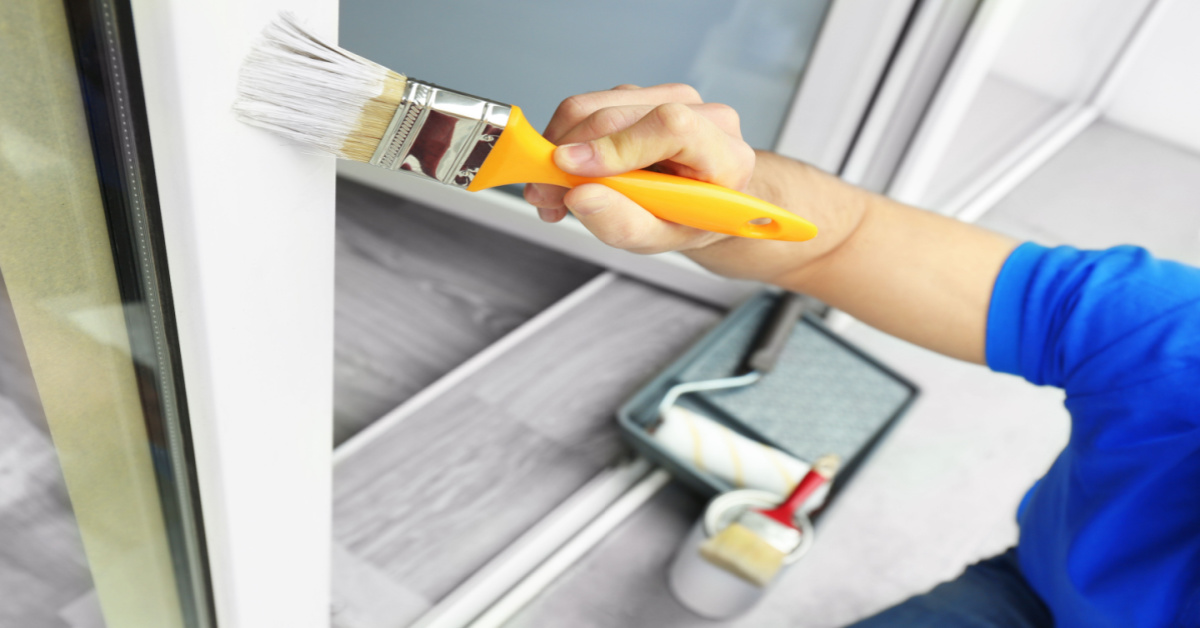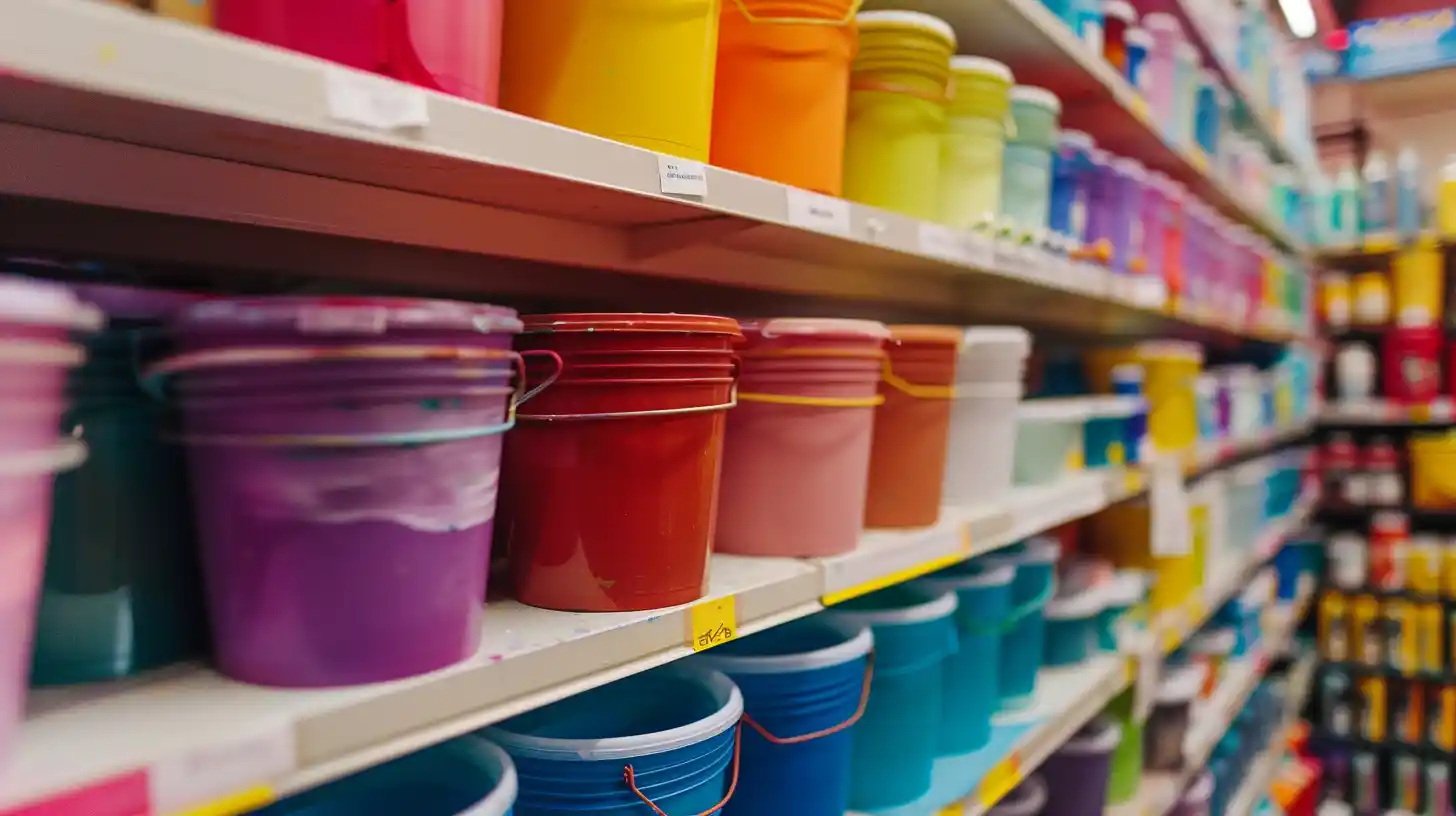Table of Contents
Quality Service Guarantee Or Painting Free

Get a rental agreement with doorstep delivery

Find the BEST deals and get unbelievable DISCOUNTS directly from builders!

5-Star rated painters, premium paints and services at the BEST PRICES!
Loved what you read? Share it with others!


Submit the Form to Unlock the Best Deals Today
Help us assist you better
Check Your Eligibility Instantly

Experience The NoBrokerHood Difference!
Set up a demo for the entire community
Solvent-Based Paint vs Water-Based Paint: A Detailed Guide
Table of Contents
Paint that uses organic solvents as a vehicle for pigment and resin is known as solvent-based paint. Throughout the drying process, these solvents evaporate, leaving the surface with a sturdy, long-lasting coating. Solvent-based paints have several benefits, chief among them being exceptional resistance to weathering, chemicals, and abrasion. They are appropriate for use in abrasive conditions and high-traffic areas because they create strong connections with the surface. Furthermore, paints with a solvent basis usually have a glossy, smooth finish.
During application and drying, solvent-based paints leak volatile organic compounds (VOCs) into the atmosphere, endangering human and environmental health as well as contributing to air pollution.
What is Solvent-Based Paint?
Paint that has both the pigment and the binder contained in an organic solvent carrier is known as solvent-based paint. These solvents, which are usually petroleum distillates or other volatile organic compounds (VOCs), act as a medium for applying the paint and then evaporate to leave behind a solid, sticky layer on the surface as it dries.
Quality Service Guarantee Or Painting Free

Get a rental agreement with doorstep delivery

Find the BEST deals and get unbelievable DISCOUNTS directly from builders!

5-Star rated painters, premium paints and services at the BEST PRICES!
Paint that is based on solvent usually consists of three primary ingredients: pigment, binder, and solvent. Paint binders, also referred to as resins, hold pigment particles together and help them stick to surfaces. At the same time, solvents keep paint liquid for easy application and speed up drying via evaporation. Pigments provide colour and opacity to paint.
Solvent-based paint has several benefits, such as superior durability, resistance to weathering, chemicals, and abrasion, as well as the capacity to provide a glossy, smooth surface. They are often used in situations where durability and robustness are crucial, such as industrial equipment, marine coatings, automotive coatings, and metal constructions.
The release of volatile organic compounds (VOCs) during application and drying is one of the disadvantages of solvent-based paints since it may lead to air pollution and health hazards. The examples of solvent-based paint include gloss enamel.
What is Water-Based Paint?
Paint that has its pigment and binder distributed in water as the primary solvent is called water-based paint, also referred to as latex or acrylic paint. Water-based paints do not need organic solvents, such as petroleum distillates or volatile organic compounds (VOCs), to maintain the paint's liquid condition or facilitate drying, in contrast to solvent-based paints. As an alternative, water acts as the carrier and evaporates throughout the drying process, leaving the surface with a solid, sticky layer.
Water, acrylic or latex binders, pigment particles, and additives, including thickeners, preservatives, and surfactants, are the usual ingredients of water-based paint. These paints come in a number of formulas, such as pure acrylic, vinyl acrylic, and acrylic latex, and each one offers unique performance attributes, including washability, flexibility, and durability.
Water paints for walls are safer for the environment and people's health than solvent-based paints because they have less emissions of volatile organic compounds (VOCs), are easier to clean up with soap and water, dry more quickly, and have a less pungent smell. They are often used for both indoor and outdoor projects, such as crafts, furniture, walls, ceilings, and trim. Furthermore, it is often used for tasks like home painting and commercial restorations as the water-based paint price is also reasonable.
Difference Between Water-Based and Oil-Based Paints
Below is a comprehensive table of solvent-based paint vs water-based:
| Factor | Water-Based Paint | Oil-Based Paint |
| Base Solvent | Water | Organic solvents (e.g., mineral spirits, turpentine) |
| Binder | Acrylic or latex polymers | Alkyd resins (derived from vegetable oils or petrochemicals) |
| Odour | Low | Strong |
| Drying Time | Fast | Slow |
| Application | Brush, roller, or spray | Brush or roller |
| Cleanup | Soap and water | Mineral spirits or paint thinner |
| Durability | Less durable, more prone to scratching and wear | Highly durable, resistant to abrasion and chemicals |
| Flexibility | More flexible, less prone to cracking | Less flexible, prone to cracking over time |
| Finish | Matte, eggshell, satin, semi-gloss, gloss | Glossy |
| Colour Retention | Good | Excellent |
| Yellowing | Minimal | Common, especially in areas with low light exposure |
| Environmental Impact | Low VOC content, environmentally friendly | High VOC content, contributes to air pollution |
| Health Concerns | Low emission of harmful fumes | High emission of harmful fumes |
| Use Cases | Interior and exterior walls, trim, furniture, crafts | Exterior surfaces, metal structures, marine coatings |
| Regulatory Compliance | Compliant with stricter environmental regulations | Subject to regulations due to VOC emissions |
This table provides a clear difference between water-based and solvent-based paint across various factors, aiding in decision-making for different painting projects based on specific requirements and preferences.
This is a thorough comparison of paints that are oil-based and water-based.
1. Composition
• Water-Based Paint: The primary solvent in these paints is water. They have binders made of latex or acrylic polymers, which dry to produce a hard covering.
• Oil-Based Paint: Also referred to as solvent-based paints, oil-based paints use turpentine or mineral spirits as their primary organic solvent. Alkyd resins, which are binders made from petrochemicals or vegetable oils, are present in them.
2. Odour
• Water-Based Paint: Water-based paints usually smell less, which makes them easier to work with—particularly inside.
• Oil-Based Paint: Because oil-based paints include organic solvents, which may be highly scented and need adequate ventilation during the application, they have a strong odour.
3. Water-Based Paint Drying Time:
Water-based paints dry relatively fast, sometimes in a matter of hours. They are perfect for tasks that need to be completed quickly.
• Oil-Based Paint: Oil-based paints cure more slowly than other paint types, sometimes requiring several hours to many days. While a flawless finish may be achieved with this extended drying period, the project's completion may be delayed.
4. Application
• Water-Based Paint: Water-based paints allow a variety of application techniques, including brush, roller, and spray gun use.
• Oil-Based Paint: A brush or roller is usually used to apply oil-based paints. Because spray application requires enough ventilation and the paint is viscous, it is less prevalent.
5. Cleanup
• Water-Based Paint: Just soap and water are needed for the simple cleanup of water-based paints. It is possible to clean brushes, rollers, and other instruments quickly and effectively.
• Oil-Based Paint: To clean off oil-based paint, use paint thinner or mineral spirits, both of which are combustible and poisonous. It is essential to dispose of used solvents properly to prevent contaminating the environment.
6. Sturdiness
• Water-Based Paint: Especially in high-traffic areas, water-based paints may be more prone to wear and scratches and are less durable than oil-based paints.
• Oil-Based Paint: Suitable for use in harsh situations, including external surfaces and metal buildings, oil-based paints are very durable and abrasion-resistant.
7. Adaptability
• Water-Based Paint: Water-based paints may be advantageous for surfaces that expand and contract since they are more flexible and less likely to break over time.
• Oil-Based Paint: Particularly in regions where temperatures fluctuate, oil-based paints are less flexible and may eventually become brittle, resulting in flaking and breaking.
8. Complete
• Water-Based Paint: Water-based paints may be applied in a range of finishes, such as gloss, satin, matte, eggshell, and semi-gloss, to suit a range of aesthetic tastes.
• Oil-Based Paint: Oil-based paints usually result in a glossy sheen that may improve the surfaces' look but might not be appropriate for all uses.
9. Environmental Impact
• Water-Based Paint: Compared to oil-based paints, water-based paints have a reduced VOC (volatile organic compound) content, making them more compatible with stricter laws and ecologically friendly.
• Oil-Based Paint: Paints with an oil basis have a more excellent volatile organic compound (VOC) content, which makes them hazardous to the environment and human health. Regulations aiming at lowering VOC emissions apply to them.
10. Health Issues
• Water-Based Paint: Painters and those who live in painted areas are less at risk for health problems since water-based paints release less toxic fumes during application and drying.
• Oil-Based Paint: Paints with an oil basis release more hazardous substances and volatile organic compounds into the air, which may lead to respiratory discomfort and other health problems.
In conclusion, although both oil-based and water-based paints have benefits and drawbacks, the decision between the two frequently comes down to aspects like durability, odour, drying time, health concerns, and environmental effects. When choosing the best paint for a particular job, several variables must be taken into account.
In conclusion, a number of elements, such as drying time, durability, odour, environmental effects, and health issues, influence the decision between oil-based and water-based paints. Because they contain less volatile organic compounds (VOCs), water-based paints provide benefits, including quick drying periods, little odour, simple soap and water cleaning, and compliance with stringent environmental standards. They may be used for many different things, like furniture, crafts, and surfaces, both inside and outside. Conversely, oil-based or solvent-based paints are perfect for harsh settings, including external surfaces, metal buildings, and marine coatings, because they provide excellent durability, abrasion resistance, and a glossy sheen.
Choose NoBroker For Hassle-Free Painting Services
Choosing between oil- and water-based paints should depend on the particular needs and preferences of the project, taking into account aspects like convenience, sustainability of the environment, and performance. Your house can get a new lease on life with a coat of paint, making it feel more inviting and making a lasting impression on family and visitors. We at NoBroker Painting Services are committed to offering excellent solutions that strike a balance between quality and affordability because we recognize the importance of this project. We take great satisfaction in exceeding expectations with our outstanding results.
Frequently Asked Questions
Oil-based paints use organic solvents like mineral spirits and alkyd resins as binders. In contrast, water-based paints utilise water as the primary solvent and acrylic or latex polymers as binders. While oil-based paints are more resilient and provide a glossy finish, water-based paints dry more quickly, are smelless, and need less cleanup effort.
Indeed, after properly priming and sanding the surface, water-based paint may be placed over oil-based paint. To prevent problems with adhesion, it is necessary to make sure that the two kinds of paint are compatible.
Since they adhere to more vital environmental rules and have a reduced volatile organic compound (VOC) content, water-based paints are thought to be more ecologically benign. Compared to oil-based paints, they release less toxic fumes and are safer for the environment and people.
In general, sure. When it comes to durability and abrasion resistance, oil-based paints often outperform water-based paints. When durability is essential, they are often used for external surfaces, metal buildings, and high-traffic locations.
No, compared to oil-based paints, water-based paints usually smell less, which makes them easier to work with, particularly inside. One other factor in better interior air quality both during and after painting is the lack of strong smells associated with water-based paints.
Loved what you read? Share it with others!
NoBroker Painting Testimonials
Before this festive season
get your house painted
Most Viewed Articles

40+ Best Stunning Two Colour Combinations for Bedroom Walls to Elevate Your Space in 2025
January 31, 2025
309953+ views

Top 25 Outside Color Combinations with Colour Codes for a Stylish Home in 2025
January 31, 2025
128459+ views

Asian Paint Price 20 Litre: Complete Guide to Different Variants and Costs in 2025
January 31, 2025
58690+ views

24 Latest Main Gate Colour Combinations for a Modern Look in 2025
December 28, 2024
46483+ views

Top Asian Paints Colour Codes: Transform Your Home with Latest Colours 2025
December 17, 2024
40789+ views
Recent blogs in
36 Creative Door Colour Combination Ideas for Your Stylish Home Entrances in 2025
January 31, 2025 by Priyanka Saha
Best Furniture Polish for Antiques and Wooden Surfaces
January 31, 2025 by NoBroker.com
5 Vastu Colours and Where They Should Be Used
January 31, 2025 by NoBroker.com
Best Colours for Small Rooms: Ultimate Paint Guide
January 31, 2025 by NoBroker.com
The Pantone Colour of the Year and How to use it
January 31, 2025 by NoBroker.com




Join the conversation!